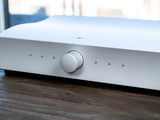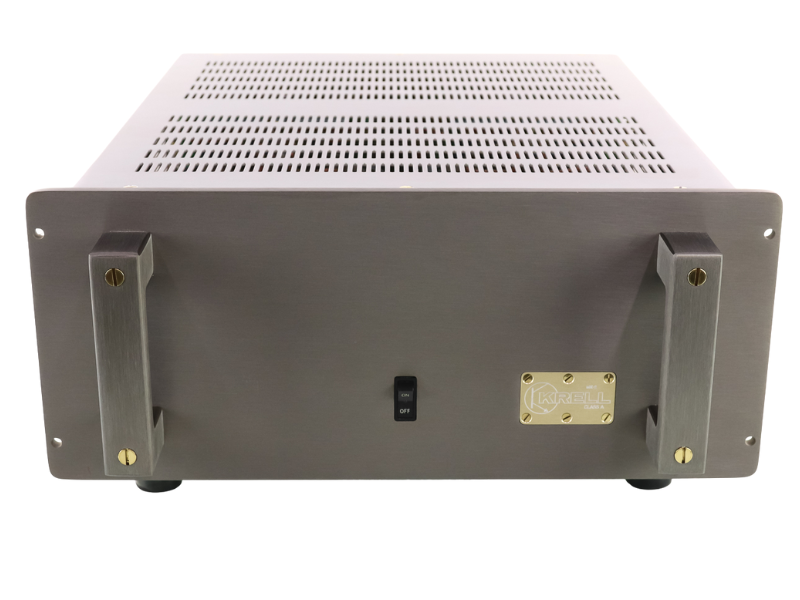When Amplifiers Invent the Future: The Designs That Changed Hi-Fi

Every era of Hi-fi has those pieces of kit that stick around forever, either because the design is replicated or the actual amps just keep circulating, being well cared for and kept running for years. Amplifiers that created a cult following with listeners and set new standards for designers. Further still, there are a few designs built with engineering ideas so advanced that they still feel modern, even decades later.
These designs were bold, sometimes baffling, and often overbuilt. Reviewers may have raved or had mixed opinions while dealers worked to really explain the difference. Inventing new ways to describe a sound, but at the end of the day, the listeners who got in early knew they had something special, maybe even a prototype of the future.
HiFi has been full of innovators since its inception, but some simply move the entire goal post forward, forcing the timeline of the rest of the industry to follow suit. They may have been designing with the future of other components in mind, such as more efficient speakers and more revealing DACs, and considering new ways to incorporate current, control, and truth into a design. Many of these designs continue to shape the way we listen today.
What Makes an Amp “Ahead of Its Time”?
Most amplifiers are judged by how well they serve the systems of their day. The truly future-focused ones, though, carry qualities that feel almost overbuilt when they launch, features that only reveal their whole purpose as the rest of hi-fi evolves.
A few of the markers:
- Current Delivery: This refers to the ability of an amplifier to double power output as impedance drops, prepared for speakers that wouldn’t exist until years later. It's a crucial aspect of amplifier design as it ensures the amplifier can drive even the most demanding speakers with ease.
- Topology Innovation: Pure Class A at scale, early adoption of MOSFETs, or balanced circuits introduced long before they became common practice.
- Power Supplies: Oversized transformers and capacitors, engineered with headroom for future generations of demanding gear.
- Modularity and Flexibility: The ability to be upgraded or modified with swappable modules, or designs that anticipated digital integration before “future-proof” was a word. For instance, an amplifier might have a separate module for the preamp, power amp, and DAC, allowing each component to be upgraded independently.
- Build Philosophy: Engineering choices that look excessive on paper, massive heatsinks, industrial chassis, or military-grade parts, but stand the test of decades.
When these traits converge, you end up with an amplifier that doesn’t just perform for its time but continues to feel relevant, usable, and even visionary years down the line.
If you want a deeper dive into how amplifier classes actually sound — Class A, AB, and D, plus the hybrids in between — check out our guide: [Class A vs. Class AB vs. Class D: What’s the Difference in Sound?]
The Legends That Pushed the Future Forward

Some amplifiers didn’t just raise the bar; they built a new one altogether. Each of these designs introduced ideas that seemed excessive at the time, but went on to shape the way amplification is built, measured, and experienced today.
Krell KSA-100 (1980)
Dan D’Agostino’s first Krell amplifier was a monster. Heavy, hot-running, and unapologetically Class A, it was built to deliver bottomless current into loads that would send most amps gasping. At a time when few speakers required that kind of muscle, the KSA-100 was preparing for a future of low-impedance ribbon and planar designs. It redefined what “control” could mean in an amplifier.
Audio Research D-79 (1978)
In the late ’70s, William Zane Johnson and Audio Research blurred the line between vintage tube warmth and modern precision. The D-79 delivered tube character with scale and grip that tube amps weren’t supposed to have. It proved that tube technology, when engineered with rigor, wasn’t destined for nostalgia; it could be a reference standard.
Mark Levinson ML-2 (1977)
The Mark Levinson ML-2 was a study in extremes: a compact Class A monoblock that produced only 25 watts, yet could drive difficult loads with authority. Its secret was stability into impedance dips, again, anticipating a future where speaker designers would push boundaries. The ML-2 showed that refinement and power weren’t mutually exclusive.
Naim NAP 250 (1975)
NAP 250 seemed modest, even utilitarian, when you first see it. Its genius was in the details: regulated power supplies, modular design (for serviceability), and a sound signature that felt unusually “musical” for the era. What seemed like quirkiness or an oddity in the 1970s has become part of the DNA for modern integrated amplifiers and streaming amps. In fact the 250 still exists today, and you can often find a modern version of the NAP 250 on fresh arrivals used, for a killer price.
Modern-Day Heirs to the Future-Forward Legacy

The fingerprints of the past are still visible in today’s most forward-looking amplifiers. Some follow a direct lineage, while others embody the same spirit of uncompromising design with radically different tools.
Audio Research I/50 and I/70
The D-79 proved tubes could deliver scale and precision, not just nostalgia. The I/50 integrated amp brought that legacy into a compact, modular integrated, and the new I/70 doubles down with auto-bias 6550 tubes, modular phono and DAC options, and styling drawn from ARC’s flagship Reference line. These are tube amps that don’t look back; they’re designed to grow with modern systems.
Mola Mola Kula & Perca
If ARC represents tradition reimagined, Mola Mola is futurism in full flight. The Dutch brand builds electronics that aim for absolute transparency, with distortion figures so low they border on theoretical. The Kula integrated combines a preamp, DAC, and power amp into one modular chassis, while the Perca stereo amp delivers 150 watts of power with vanishingly low distortion. This is “ahead of its time” redefined for the digital era.
Mark Levinson No. 536 and 5805
From the ML-2’s obsession with stability came an entire design language of purity and control. Today’s Levinson amps, whether the Class AB 536 monoblocks or the 5805 integrated, hold that line. They prove that refinement and raw authority can still coexist, carrying forward the ML-2’s philosophy in forms suited for both separates enthusiasts and integrated users.
Dan D’Agostino Momentum Series
The Krell KSA-100 set the standard for bottomless current. Decades later, D’Agostino’s Momentum amps continue the mission, now with incredibly over-engineered internals (and externals for that matter) with far greater efficiency. They deliver the same sense of unshakable control.
Candidates for Tomorrow’s Legends
And while much of this story is written in the past, a few designs hitting the market today already carry that same “ahead of their time” spirit.
Some amps landing today already carry the same future-forward DNA as the classics:
- ModWright KWA 99 Monoblocks – Oversized power supplies, fully balanced design, and a chassis built to last decades. Dan Wright’s 9 Series feels engineered for the next generation of systems.
- Devialet Expert Pro – A wafer-thin chassis hiding hybrid Class A/D amplification, DAC, streamer, and software-upgradable architecture. Overbuilt not in metal, but in code.
- Hegel H30A – A dual-mono powerhouse with a supply big enough to drive almost anything. If the Krell KSA-100 was the blueprint for bottomless current, the H30A is its modern echo.
Lessons for Today’s Audiophile
The great amps of the past weren’t just over-engineered toys. They were case studies in how to think beyond the present moment. The same is true for today’s heir designs, like the Audio Research I/70 and Mola Mola’s Kula or Perca, which aren’t built only for what listeners need right now, but for the kinds of systems and expectations that will define the next decade.
Here’s what that means for modern listeners:
- Look for overbuilt designs. A transformer that seems comically large, a chassis that feels like a vault, or circuits running Class A when most brands cut corners; these details tend to hold their value and relevance.
- Think modular. Whether it’s ARC’s optional DAC and phono cards or Mola Mola’s configurable architecture, amps that can evolve with your system usually outlast those that can’t.
- Follow the innovators. Many of the brands that were once considered eccentric (Mola Mola, Krell, Levinson, Naim) are now the reference standards. Trust your gut when something feels genuinely new.
- Remember synergy. The Krell KSA-100 was built for speakers that hadn’t arrived yet. The same principle applies today: choose amplification that can grow into the speakers you might own tomorrow.
Future-forward gear asks more of us, often in cost, in space, in spousal patience. But when you commit, it has a way of sounding fresh long after the rest of the system has been swapped out.
It’s also worth remembering that amplifiers aren’t just about power or parts—they’re the most critical sound-shapers in your system, yet often the least understood. We explore that idea further here: [The Amplifier Paradox]
Final Thoughts: The Future From The Past
The whole idea of a great amplifier is that it outlasts its moment. Look at the Krell KSA-100, Audio Research D-79, Mark Levinson ML-2, or Naim NAP 250. Back then, they weren’t just good amps; they showed us where hi-fi was headed. And if you trace the line forward, you can still see their fingerprints today, whether it’s Audio Research’s I/70, Mola Mola’s Kula, Levinson’s latest integrateds, or D’Agostino’s Momentum series.
My fellow listeners, the lesson is simple: the best gear doesn’t just meet the needs of the moment. It anticipates the future. Sometimes that looks like overbuilt transformers and endless current delivery. At other times, it’s modularity, digital integration, or extreme precision. In every case, it’s a design that feels almost unreasonable at launch, until the rest of the industry catches up.
The next amplifier that feels like it landed here from another decade is already out there. Part of the fun is recognizing it now, before history does.
Hear More. Learn More. Love Your System More.
Join thousands of music lovers who get weekly guides, expert insights, and exclusive offers from The Music Room.
